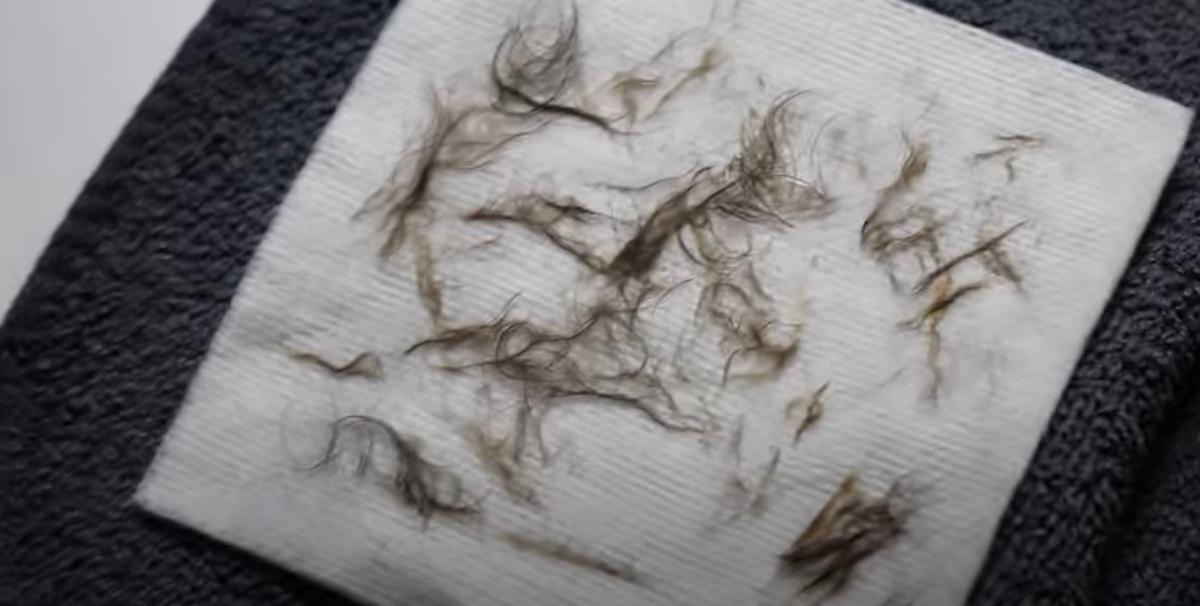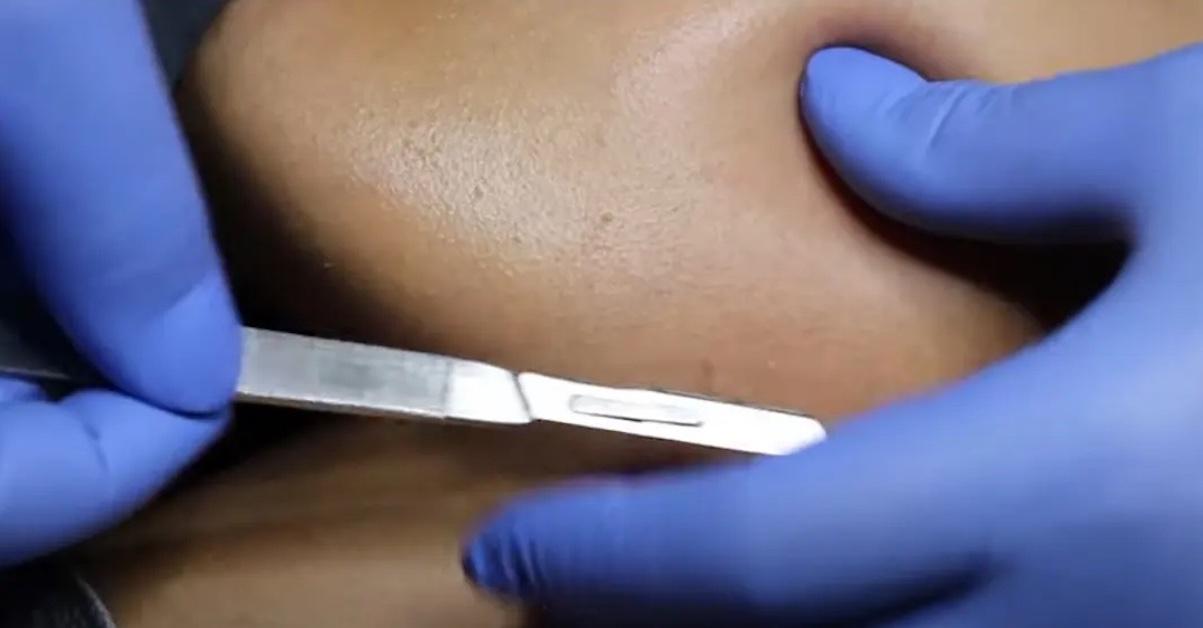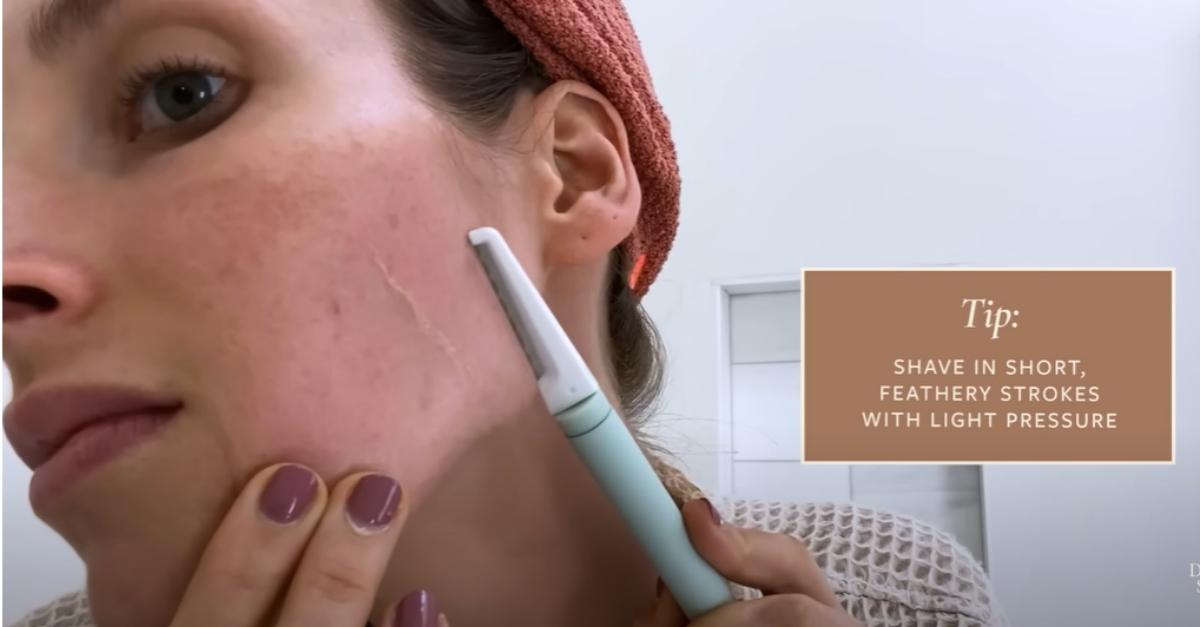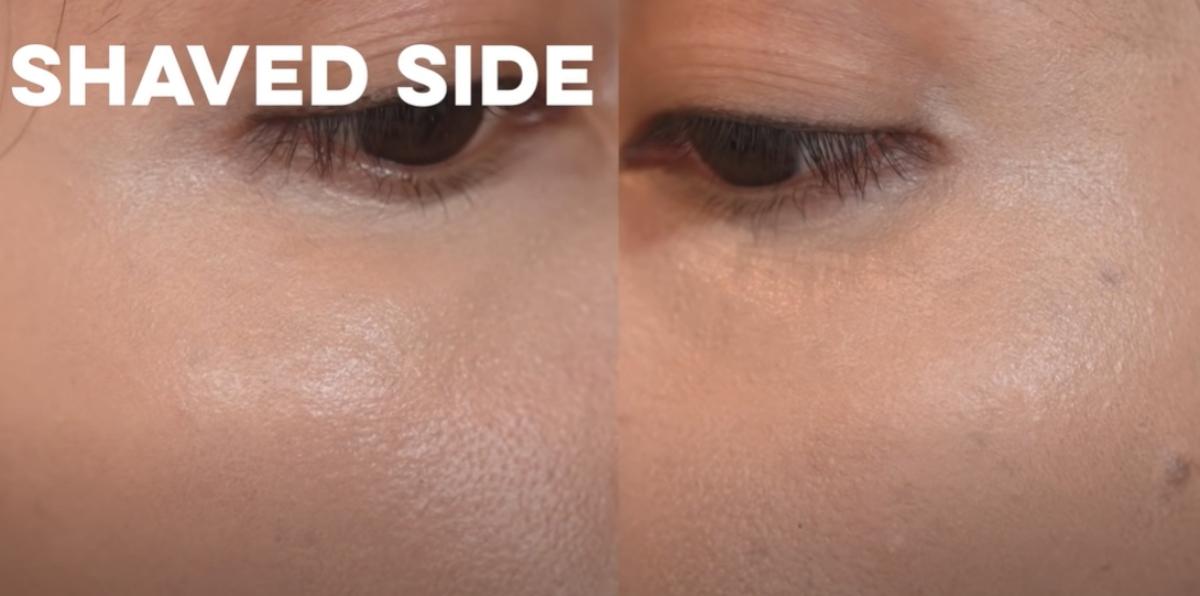Dermaplaning Before and After: How Your Skin Will Look and Feel Different
Published May 18 2023, 3:33 p.m. ET

When it comes to your regular beauty routine, you have your daily skincare regimen as well as activities that are less frequent, like dermaplaning. If you've worried about peach fuzz on your face or stubborn acne scars, you might try dermaplaning. You can even find sustainable dermaplaning tools to make the task easy at home. Check out these dermaplaning before and after testimonies.
Dermaplaning is basically another term for shaving one's face. It's something you can have a dermatologist do in the office with a scalpel or try at home with various dermaplaning tools. It's a type of exfoliation that removes the top layer of dead skin cells and can also eliminate pesky peach fuzz.
Who should try dermaplaning?
In general, dermaplaning is a good idea if you're frustrated by issues like unwanted hair (peach fuzz), scars due to acne, fine lines, and various types of skin damage due to sun exposure. Cleveland Clinic explains there are some people who shouldn't use dermaplaning: if you have active acne, moles, psoriasis, skin burns, or skin rashes, avoid the treatment.
Dermaplaning before and after: Will hair grow back thicker after dermaplaning?
One common belief about dermaplaning, as Dr. Sam Ellis explains on her Instagram and YouTube platforms, is that hair might grow back thicker after dermaplaning. Since many women seek out dermaplaning treatments to take care of "vellus hair" which is more commonly called "peach fuzz," it's important to know the answer. Ellis says that this is a myth that needs to end, and no, your hair will not grow back thicker after dermaplaning.
What does your skin look like before dermaplaning?
Everyone's skin is different, of course, but how your skin appears before dermaplaning is what might prompt you to try this treatment. If your skin has irregular pigmentation (dark spots), acne scars, lasting sun damage, or simply looks duller than you'd like, dermaplaning could help. So your skin may look damaged in some way, or be covered in a layer of soft peach fuzz.
This TikTok video shows the changes from dermaplaning.
Your skin will look and feel different after dermaplaning.
As Dr. Ellis, a board-certified dermatologist, explains, one of the benefits of dermaplaning is that your skin after dermaplaning will lack the unwanted hair growth that often appears on faces. She also notes some of the other common benefits of dermaplaning or face shaving, such as smoother skin, a brighter complexion, and even better absorption by cosmetic products.
After dermaplaning, as Ellis reminds viewers, you must be sure to wear sunscreen during the following days and weeks. Of course, she recommends sun protection on your face every day, but it's especially important after dermaplaning since you've lost that outer layer of skin and it's more vulnerable to the sun.

One patient's removed facial hair from a dermaplaning treatment.
Some users swear by dermaplaning as a way to reveal younger-looking skin. In addition, they may help your skin absorb various beauty products such as serums, moisturizers, and makeup even better. Dr. Alexis Stephens, also a board-certified dermatologist with a YouTube channel, says that the skin can absorb beauty products better after dermaplaning.
Another YouTuber created a video in which she shaved only one side of her face for one week, then documented the differences of the two sides of her face. She noticed that makeup absorbed better into the side that she had shaved.
Remember that you can try dermaplaning at home with inexpensive eyebrow razors, or have a dermatologist or aesthetician perform the procedure in their office. As Dr. Ellis explains, she doesn't view the at-home process as dermaplaning but rather "face shaving." Dermaplaning is done with a surgical blade by a professional. However, you may see similar results with at-home treatment.


